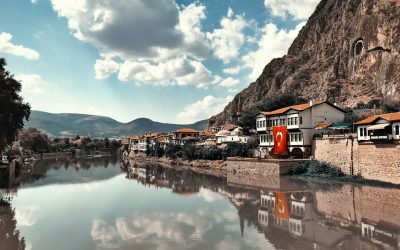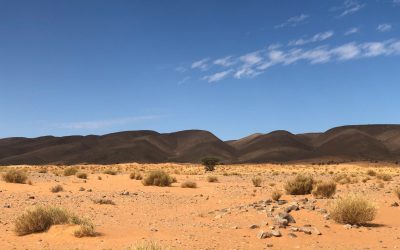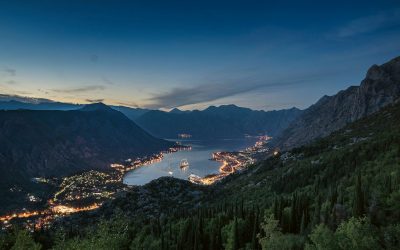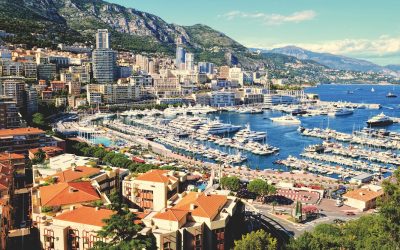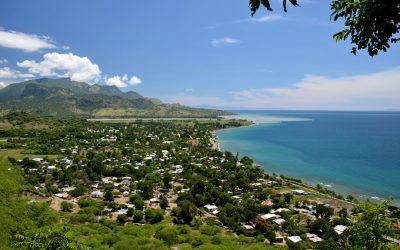World Geography
Geography is the study of the Earth’s landscapes, environments, and the relationships between people and their surroundings. It encompasses both the physical aspects of the Earth, such as its landforms, bodies of water, and climate, as well as the human aspects, including population distribution, cultures, and economies. World geography is a broad field that seeks to understand the complexities of our planet and how humans interact with it. By studying world geography, we can gain a deeper appreciation for the diversity of our planet and the interconnectedness of its various regions.
Geography is a multidisciplinary field that draws on elements of physical science, social science, and humanities. It involves the use of maps, spatial analysis, and geographic information systems (GIS) to understand the Earth’s surface and the processes that shape it. World geography also encompasses the study of human geography, which examines the ways in which people and their activities are distributed across the Earth. By understanding world geography, we can better appreciate the environmental, cultural, and economic challenges facing different regions of the world. This knowledge is crucial for addressing global issues such as climate change, resource management, and international development.
The Five Oceans and Seven Continents
The Earth’s surface is divided into five major oceans: the Pacific, Atlantic, Indian, Southern (or Antarctic), and Arctic Oceans. These vast bodies of water play a crucial role in regulating the Earth’s climate and supporting diverse marine ecosystems. The oceans also serve as important transportation routes and a source of food and other natural resources for human societies around the world.
In addition to the oceans, the Earth’s landmasses are divided into seven continents: Africa, Antarctica, Asia, Europe, North America, Australia (or Oceania), and South America. Each continent has its own unique physical and cultural characteristics, shaped by millions of years of geological processes and human history. From the deserts of Africa to the rainforests of South America, the continents offer a rich tapestry of landscapes and environments for exploration and study.
Major Mountain Ranges and Deserts
The Earth’s surface is also marked by major mountain ranges and deserts that have shaped the planet’s physical and cultural landscapes. The Himalayas, for example, are the highest mountain range in the world and are home to diverse ecosystems and cultures in countries such as India, Nepal, and Bhutan. The Andes in South America, the Rockies in North America, and the Alps in Europe are other prominent mountain ranges that have influenced human settlement patterns and economic activities.
Deserts cover about one-third of the Earth’s land surface and are characterized by low precipitation and extreme temperatures. The Sahara Desert in Africa is the largest hot desert in the world, while the Gobi Desert in Asia is one of the largest cold deserts. Deserts are not only home to unique flora and fauna but have also been important trade routes and cultural crossroads throughout history.
Climate Zones and Biomes
The Earth’s climate is influenced by a variety of factors, including latitude, altitude, ocean currents, and prevailing winds. As a result, the planet is divided into different climate zones, each with its own characteristic weather patterns and ecosystems. The equator, for example, experiences a tropical climate with high temperatures and heavy rainfall, while the polar regions have a cold and dry climate.
These climate zones give rise to different biomes, or large ecological areas characterized by distinct plant and animal communities. The tropical rainforest biome, found near the equator, is home to a diverse array of species and is vital for regulating the Earth’s climate. The grasslands biome, found in regions such as the African savannah and North American prairies, supports grazing animals and has been important for human agriculture throughout history.
Human Geography and Population Distribution
Human geography examines the ways in which people and their activities are distributed across the Earth’s surface. It encompasses topics such as population growth, migration patterns, urbanization, and cultural diversity. Understanding human geography is crucial for addressing global challenges such as poverty, inequality, and environmental degradation.
Population distribution is uneven across the world, with some regions experiencing rapid population growth while others are declining. The majority of the world’s population lives in Asia, particularly in countries such as China and India. Urban areas are also growing rapidly, with more than half of the world’s population now living in cities. This trend has significant implications for infrastructure development, resource management, and social inequality.
Historical and Cultural Geography
Historical geography examines how human activities have shaped the Earth’s landscapes over time. It explores topics such as colonialism, trade routes, and the rise and fall of empires. Cultural geography focuses on how human cultures have developed in different regions of the world and how they interact with their environments.
The Silk Road, for example, was an ancient trade route that connected China with Europe and facilitated the exchange of goods, ideas, and technologies across Eurasia. This historical trade route had a profound impact on the development of cultures and economies along its path. Similarly, cultural geographers study how different societies have adapted to their environments through practices such as agriculture, architecture, and religious beliefs.
The Importance of Geographic Knowledge
Geographic knowledge is crucial for addressing global challenges such as climate change, resource management, and international development. By understanding world geography, we can better appreciate the environmental, cultural, and economic challenges facing different regions of the world. This knowledge is crucial for addressing global issues such as climate change, resource management, and international development.
Geographic knowledge also helps us to understand our interconnectedness with other regions of the world. By studying world geography, we can gain a deeper appreciation for the diversity of our planet and the interconnectedness of its various regions. This understanding can foster a sense of global citizenship and empathy for people from different cultures and backgrounds.
In conclusion, world geography is a complex and multifaceted field that encompasses both physical and human aspects of the Earth’s landscapes. By studying world geography, we can gain a deeper appreciation for the diversity of our planet and the interconnectedness of its various regions. This knowledge is crucial for addressing global challenges such as climate change, resource management, and international development. It also helps us to understand our interconnectedness with other regions of the world and fosters a sense of global citizenship.
FAQs
What is world geography?
World geography is the study of the Earth’s landscapes, environments, and the relationships between people and their environments. It encompasses the physical features of the Earth, as well as the human activity that takes place on it.
Why is world geography important?
World geography is important because it helps us understand the world around us. It provides insights into the physical and human processes that shape our planet, and helps us make informed decisions about how to interact with our environment.
What are the main branches of world geography?
The main branches of world geography include physical geography, which focuses on the Earth’s natural features and processes, and human geography, which examines the relationships between people and their environments.
How does world geography impact our daily lives?
World geography impacts our daily lives in numerous ways, from influencing the weather and climate we experience, to shaping the availability of natural resources and influencing the distribution of populations and cultures around the world.
What are some key concepts in world geography?
Key concepts in world geography include location, place, human-environment interaction, movement, and region. These concepts help geographers understand and interpret the world around them.
Exploring the Enchanting Land of Myanmar: A British Traveller’s Guide
Myanmar, formerly known as Burma, is a country in Southeast Asia that has recently emerged as a popular destination for British travellers. With its rich history, vibrant culture, and stunning landscapes, Myanmar offers a unique and unforgettable travel experience. Myanmar has a long and complex history, with influences from various cultures and civilizations. From the ancient Pyu city-states to the powerful Bagan Empire, Myanmar has been shaped by a diverse range of influences. The country is also home to a rich cultural heritage, with traditions and customs that have been passed down through generations. In recent years, Myanmar has seen a surge in tourism, attracting travellers from all over the world. British travellers, in particular, have been drawn to the country’s unique blend of history, culture, and natural beauty. The warm hospitality of the local people and the opportunity to explore off-the-beaten-path destinations have also contributed to Myanmar’s appeal. Summary Myanmar is a fascinating destination for British travellers, offering a unique blend of culture, history and natural beauty. The best time to visit Myanmar is during the cool and dry season from November to February, when temperatures are mild and rainfall is low. Tourists can get around Myanmar by plane, train, bus, taxi or boat, depending on their budget and itinerary. Top attractions in Myanmar include the ancient city of Bagan, the Shwedagon Pagoda in Yangon, and the Inle Lake region. Myanmar’s rich cultural heritage is reflected in its many temples, pagodas and monasteries, which offer a glimpse into the country’s spiritual traditions. The Best Time to Visit Myanmar: Planning Your Trip When planning a trip to Myanmar, it...
Exploring the Vibrant Culture and Cuisine of Turkey: A Journey Through the Land of the Ottoman Empire
The Ottoman Empire, which lasted from the 14th century to the early 20th century, was one of the most powerful and influential empires in history. It spanned three continents and encompassed a diverse range of cultures and peoples. The empire had a profound impact on the region, particularly on what is now modern-day Turkey. The Ottoman Empire shaped Turkish culture in many ways, from its language and religion to its cuisine and architecture. The Ottoman Empire was founded by Osman I in 1299 and grew to become a vast empire that stretched from southeastern Europe to western Asia and northern Africa. It reached its peak under the rule of Suleiman the Magnificent in the 16th century, when it controlled much of southeastern Europe, western Asia, and northern Africa. The empire was known for its military prowess, administrative efficiency, and cultural achievements. One of the most significant ways in which the Ottoman Empire shaped Turkish culture was through its language. The empire adopted Turkish as its official language, which helped to standardize and spread the language throughout the region. Today, Turkish is spoken by more than 80 million people in Turkey and is an important part of Turkish identity. Summary The Ottoman Empire had a significant cultural impact on Turkey. Turkish cuisine has a rich history and traditions. Istanbul’s markets and bazaars are vibrant and worth exploring. Turkish coffee and tea culture is an art form. Anatolia has regional specialities and delicacies worth trying. The Rich History and Traditions of Turkish Cuisine Turkish cuisine is renowned for its rich flavors and diverse ingredients. It is a fusion of Central Asian,...
Exploring the Hidden Gems of Mozambique: A Journey Through the Heart of Southern Africa
Mozambique, located on the southeastern coast of Africa, is a country that often goes unnoticed by travelers. However, those who do venture to this hidden gem are rewarded with a wealth of natural beauty, rich history, vibrant culture, and warm hospitality. From its untouched beaches and thriving wildlife to its vibrant cities and unique cuisine, Mozambique offers a diverse range of experiences for every type of traveler. One of the reasons why Mozambique is often overlooked as a travel destination is its turbulent past. The country endured a long and brutal civil war that lasted from 1977 to 1992, which left a lasting impact on its infrastructure and economy. However, in recent years, Mozambique has made significant progress in rebuilding and developing its tourism industry. With its stunning landscapes, friendly locals, and affordable prices, Mozambique is now emerging as a popular destination for adventurous travelers seeking off-the-beaten-path experiences. Summary Mozambique is a land of hidden treasures waiting to be discovered. The country has a rich history and culture that is worth exploring. Mozambique boasts untouched beaches that are perfect for relaxation and adventure. The wildlife and national parks in Mozambique are thriving and offer unique experiences. The vibrant cities of Mozambique are full of life and culture, waiting to be explored. The Rich History and Culture of Mozambique Mozambique’s history is a tapestry woven with influences from various cultures and civilizations. The country was once an important trading hub along the Indian Ocean coast, attracting Arab, Persian, and Indian merchants who brought with them their languages, religions, and customs. In the 15th century, Portuguese explorers arrived in Mozambique and...
Exploring the Hidden Gems of Tunisia: Uncovering the Rich Culture and History of North Africa
Tunisia, located in North Africa, is a country that often goes unnoticed by travelers. However, this small nation is a treasure trove of hidden gems waiting to be discovered. With its diverse geography, rich history, and vibrant culture, Tunisia offers a unique and unforgettable travel experience. Tunisia is situated on the Mediterranean coast, bordered by Algeria to the west and Libya to the southeast. Its geography is incredibly diverse, ranging from stunning beaches along the coast to the vast Sahara Desert in the south. This diversity allows visitors to experience a wide range of landscapes and activities within a relatively small area. What sets Tunisia apart as a travel destination is its rich history and cultural influences. Over the centuries, Tunisia has been influenced by various civilizations, including the Phoenicians, Romans, Arabs, Ottomans, and French. This blend of cultures has shaped Tunisia into a unique melting pot of traditions, architecture, and cuisine. Summary Tunisia is a land of hidden gems waiting to be discovered. The country boasts a rich culture and history that is worth exploring. The ancient city of Carthage is a must-visit destination for history buffs. The Bardo Museum is a treasure trove of Tunisian art and history. Tunisian cuisine is a fusion of Mediterranean and North African flavours that is sure to delight foodies. The Rich Culture and History of Tunisia: A Brief Overview Tunisia’s history dates back thousands of years, with evidence of human habitation as early as the Paleolithic era. Throughout its history, Tunisia has been ruled by various empires and civilizations, each leaving their mark on the country’s culture and heritage. One of...
Discovering the Magic of Morocco: A Journey Through the Sights, Sounds and Flavours of North Africa
Morocco, a country located in North Africa, has long been a popular travel destination for adventurers and culture enthusiasts alike. With its vibrant colours, rich history, delicious cuisine, and stunning landscapes, Morocco offers a unique and unforgettable experience for visitors. From the bustling markets of Marrakech to the tranquil beauty of the Sahara Desert, there is something for everyone in this enchanting country. Summary Morocco’s vibrant souks offer a sensory explosion of colours and sounds. The country’s rich history and culture can be explored through its architecture and design. Moroccan cuisine is a delicious blend of spices and flavours. The country’s natural wonders range from the Sahara to the Atlas Mountains. Moroccan hospitality is warm and welcoming, with unique accommodation options like riads and guesthouses. The Vibrant Colours and Sounds of the Moroccan Souks One of the highlights of visiting Morocco is exploring the bustling markets, known as souks, that can be found in cities such as Marrakech and Fez. These markets are a feast for the senses, with their vibrant colours, exotic scents, and lively atmosphere. As you wander through the narrow alleyways, you will be greeted by the sounds of merchants calling out their wares and the clinking of metal as artisans work on their crafts. The souks offer a wide variety of goods for purchase, from traditional Moroccan clothing and textiles to intricate handmade crafts and jewellery. You can find beautifully woven rugs, colourful ceramics, and intricately carved wooden furniture. The souks are also a great place to sample local delicacies such as dried fruits and nuts, spices, and traditional Moroccan sweets. Exploring the Rich History...
Discovering the Hidden Gems of Trinidad and Tobago: A Journey Through the Caribbean’s Best-Kept Secret
Trinidad and Tobago is a vibrant and diverse travel destination located in the southern Caribbean. While it may be known for its lively Carnival celebrations and beautiful beaches, there are many lesser-known attractions and experiences that make this country a hidden gem for travellers. From its rich cultural heritage to its stunning natural wonders, Trinidad and Tobago offers a unique and unforgettable experience for those willing to explore beyond the beaten path. Summary Trinidad and Tobago is a treasure trove of cultural, natural, and historical wonders waiting to be explored. The country’s unique blend of African, Indian, and European influences is reflected in its vibrant festivals, delicious cuisine, and rich heritage. From pristine beaches to lush rainforests, Trinidad and Tobago offers a diverse range of natural wonders for nature lovers to discover. The country’s festivals are a celebration of music, dance, and colour, and offer a glimpse into its rich cultural heritage. Trinidad and Tobago is a paradise for adventure seekers, with activities ranging from hiking to scuba diving. The Cultural Riches of Trinidad and Tobago: A Fusion of African, Indian, and European Influences Trinidad and Tobago’s cultural heritage is a melting pot of African, Indian, and European influences. The country’s history is marked by colonization, slavery, and indentured labour, which brought people from various backgrounds to the islands. This diverse mix of cultures has shaped the music, dance, and art of Trinidad and Tobago. One of the most famous cultural exports from Trinidad and Tobago is calypso music. Originating from African slaves who used music as a form of communication and resistance, calypso has evolved into a vibrant...
Discover the Hidden Gems of Montenegro: A Journey Through the Jewel of the Adriatic
Nestled in the Balkans, Montenegro is a hidden gem waiting to be discovered. With its stunning coastline, rich cultural heritage, and breathtaking natural wonders, this small country has something to offer every type of traveler. From the charming coastal towns to the rugged mountains and tranquil islands, Montenegro is a destination that will leave you in awe. Whether you’re seeking adventure, relaxation, or a glimpse into history, Montenegro has it all. Summary Montenegro offers a beautiful and diverse travel experience The Adriatic coastline is a must-see for its charming towns and stunning beaches Montenegro’s rich history and cultural heritage are worth exploring National parks offer breathtaking natural wonders for hiking and trekking Sampling local cuisine and experiencing the warmth of the locals are highlights of Montenegro travel The Coastal Charm of Montenegro: Exploring the Adriatic Coastline Montenegro’s coastline stretches along the Adriatic Sea, offering visitors a picturesque setting with crystal-clear waters and rugged cliffs. The coastal towns and cities are filled with charm and character, each with its own unique atmosphere. Kotor, a UNESCO World Heritage Site, is a must-visit destination with its medieval old town and stunning bay views. Budva is another popular coastal town known for its vibrant nightlife and beautiful beaches. Speaking of beaches, Montenegro boasts some of the most stunning beaches in Europe. From the sandy shores of Becici Beach to the secluded coves of Sveti Stefan, there’s a beach for every preference. Water activities such as snorkeling, kayaking, and paddleboarding are also popular along the coast. Whether you’re looking to relax on the beach or explore the underwater world, Montenegro’s coastline has it all....
Exploring the Majestic Beauty of Tonga: A Journey Through the South Pacific
Tonga, officially known as the Kingdom of Tonga, is a Polynesian archipelago located in the South Pacific Ocean. It is made up of 169 islands, with the main island being Tongatapu. Tonga has a rich history and culture, with influences from Polynesia, Melanesia, and Micronesia. The country is known as the “Land of the Friendly Islands” due to the warm and welcoming nature of its people. Tonga has a fascinating history that dates back thousands of years. It was once ruled by powerful chiefs and kings, and evidence of this can be seen in the ancient tombs and archaeological sites that are scattered throughout the islands. The country was also visited by European explorers, including Captain James Cook, who named Tonga the “Friendly Islands” after experiencing the hospitality of the locals. Tonga is a must-visit destination for travelers who are looking for a unique and authentic experience. The country offers a blend of natural beauty, cultural heritage, and warm hospitality that is hard to find elsewhere. Whether you’re interested in exploring historical landmarks, relaxing on pristine beaches, or immersing yourself in local traditions, Tonga has something for everyone. Summary Tonga is known as the Land of the Friendly Islands, and for good reason. The culture and history of Tonga is rich and fascinating, with many unique traditions and customs. Tonga’s beaches are some of the most pristine and beautiful in the world, with crystal-clear waters and soft white sand. Diving and snorkelling in Tonga is a must-do activity, with an abundance of marine life to discover. Hiking and trekking through Tonga’s lush forests and mountains is a great way...
Uncovering the Hidden Treasures of Mongolia: A Journey Through the Land of Eternal Blue Sky
Mongolia, a landlocked country in East Asia, is a destination that is often overlooked by travelers. However, those who venture to this remote and enchanting land are rewarded with a wealth of natural and cultural treasures waiting to be discovered. From its unique geographical phenomenon known as the “Eternal Blue Sky” to its rich nomadic culture and fascinating history, Mongolia offers a truly immersive and unforgettable travel experience. Summary Mongolia is a land of mystery and wonder, waiting to be explored. The unique geographical phenomenon of the Land of Eternal Blue Sky is a must-see for visitors. Nomadic culture is an integral part of Mongolia’s way of life and should be experienced. The Great Mongol Empire has a rich history and heritage that is worth discovering. Mongolia’s natural wonders, including the Gobi Desert and rare wildlife, are hidden treasures waiting to be uncovered. The Land of Eternal Blue Sky: A Unique Geographical Phenomenon One of the most striking features of Mongolia is its “Eternal Blue Sky.” This phenomenon refers to the country’s exceptionally clear and blue skies, which are visible for the majority of the year. The absence of pollution and minimal cloud cover contribute to this unique phenomenon, creating a landscape that seems to stretch endlessly into the horizon. The Eternal Blue Sky has a profound impact on Mongolia’s climate and landscape. The country experiences extreme temperature variations, with scorching hot summers and bitterly cold winters. The clear skies allow for intense sunlight during the summer months, resulting in high temperatures. In contrast, the lack of cloud cover during winter leads to frigid temperatures, often dropping below -40...
Exploring the Untouched Beauty of Togo: A Journey through West Africa’s Hidden Gem
Togo, a small country located in West Africa, may not be on the top of everyone’s travel list, but it is definitely a destination worth exploring. Bordered by Ghana to the west and Benin to the east, Togo offers a unique blend of culture, natural beauty, and adventure. With its rich history and diverse landscapes, Togo is a hidden gem for travelers looking for something off the beaten path. Togo has a fascinating history that dates back centuries. It was once part of the powerful Kingdom of Dahomey and later became a German colony before being divided between France and Britain after World War The country gained independence from France in 1960 and has since developed into a peaceful and stable nation. For travelers seeking an authentic experience, Togo is the perfect destination. Unlike more popular tourist destinations in Africa, Togo remains relatively untouched by mass tourism. This means that visitors can truly immerse themselves in the local culture and traditions without the crowds. From bustling markets to remote villages, Togo offers a glimpse into a way of life that is both fascinating and inspiring. Summary Togo is a hidden gem in West Africa with a rich cultural heritage and natural wonders. The country’s blend of tradition and modernity is reflected in its architecture, cuisine, and festivals. From lush forests to pristine beaches, Togo offers a diverse range of natural attractions for ecotourism. Wildlife enthusiasts can discover the country’s biodiversity through national parks and reserves. Togo’s unique cuisine is a fusion of African and European flavours, reflecting its colonial history. The Rich Cultural Heritage of Togo: A Blend of...
Discovering the Glamorous Charm of Monaco: A British Perspective
Monaco, a small city-state located on the French Riviera, is known as the playground of the rich and famous. With its luxurious lifestyle, stunning architecture, and glamorous events, Monaco has become a popular destination for those seeking a taste of the high life. The city-state is particularly popular among British tourists, who are drawn to its opulence and charm. Monaco offers a unique blend of natural beauty and man-made luxury. From its picturesque coastline to its world-class casinos and high-end shopping boutiques, the city-state has something to offer every visitor. The British have long been captivated by Monaco’s allure, with many choosing to make it their second home or holiday destination. Summary Monaco is a playground for the rich and famous, with a glamorous history and luxurious attractions. Brits have a strong connection to Monaco, with many famous faces and events drawing them to the principality. Monte Carlo is a must-see destination for British tourists, with grand architecture, stunning views, and world-class entertainment. The Monaco Grand Prix is a highlight of the year, with British fans flocking to see the world’s most prestigious race. From high-end shopping to Michelin-starred dining, Monaco offers the ultimate indulgence for British visitors. A Brief History of Monaco: From a Small Fishing Village to a Glamorous Destination Monaco has a rich history that dates back to ancient times. Originally a small fishing village, it was first established by the Phoenicians in the 6th century BC. Over the centuries, Monaco changed hands several times, with various rulers and empires laying claim to the territory. In the 13th century, Monaco came under the rule of the...
Discovering the Hidden Gems of Timor-Leste: A Journey Through Southeast Asia’s Youngest Nation
Located in Southeast Asia, Timor-Leste is a small nation that offers a unique charm and beauty to its visitors. With a rich history and diverse cultural influences, this country has much to offer in terms of natural wonders, stunning beaches, unique wildlife, adventure activities, delicious cuisine, vibrant festivals, and warm community tourism experiences. Timor-Leste is a hidden gem waiting to be explored. Timor-Leste has a fascinating history that dates back thousands of years. It was colonized by the Portuguese in the 16th century and later occupied by the Japanese during World War After gaining independence from Portugal in 1975, the country endured a long and tumultuous struggle for freedom. Today, Timor-Leste is a young nation that is still recovering from its past but has made significant progress in recent years. The culture of Timor-Leste is a blend of indigenous traditions and Portuguese influences. The people of Timor-Leste are known for their warm hospitality and strong sense of community. Traditional customs and practices are still very much alive in the country, with ceremonies and rituals being an integral part of daily life. Visitors to Timor-Leste can immerse themselves in the local culture by participating in traditional dances, trying traditional food, and learning about the customs and beliefs of the Timorese people. Summary Timor-Leste boasts unique charm and beauty that is worth exploring. The nation has a rich heritage that reflects its history and culture. Timor-Leste’s breathtaking landscapes and coastal destinations are a must-visit. The diverse ecosystem of Timor-Leste offers exciting wildlife and marine life encounters. Adventure activities, local cuisine, festivals, and community tourism are some of the things to look...

